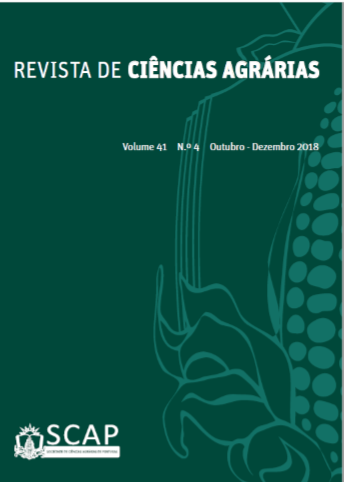Chemical control of clubroot in rocket cultivated in naturally infested field
DOI:
https://doi.org/10.19084/RCA17178Abstract
Clubroot (Plasmodiophora brassicae Woronin) is a disease that attacks all brassicaceae and that can make their cultivation unfeasible. The objective of this research was to evaluate the efficiency of 3 fungicides with physiological effect, and one resistance inducer product that lessens the reproduction of Plasmodiophora brassicae in the cultivation of rocket in a naturally infested field. Two experiments were conducted in a random experimental design, with four replications. In the first, the treatments were composed by the application of the three fungicides, Cabrio TopÒ (metiram+pyraclostrobin), OrkestraÒ (pyraclostrobin+fluxapiroxade) and RanmanÒ (cyazofamide) and a resistance inductor inductive, BionÒ (acibenzolar-S-methyl). The best treatments were evaluated in a second experiment, besides other doses for the fungicides Cabrio TopÒ and OrkestraÒ. The treatments were applied to the tray five days before the transplantation, five days before the transplantation, besides a foliar application one day after transplantation and two foliar applications, the first one day after transplantation and the second seven days after the first. The cyazofamide application was the most efficient in the management of clubroot. The metiram+pyraclostrobin was another efficient fungicide that can be used to manage the disease. The application of these products must be done in a preventive way.


